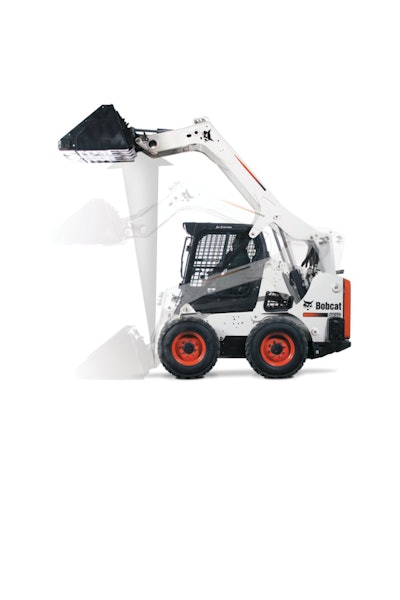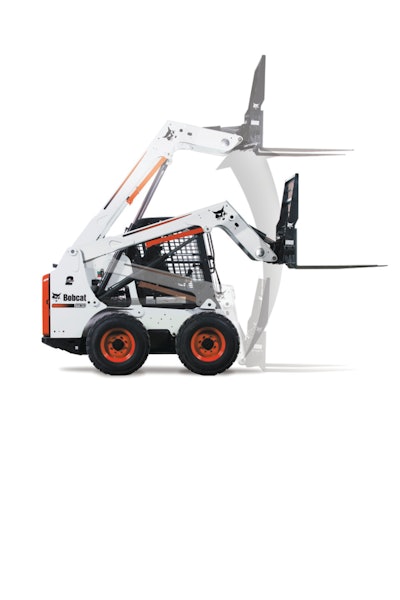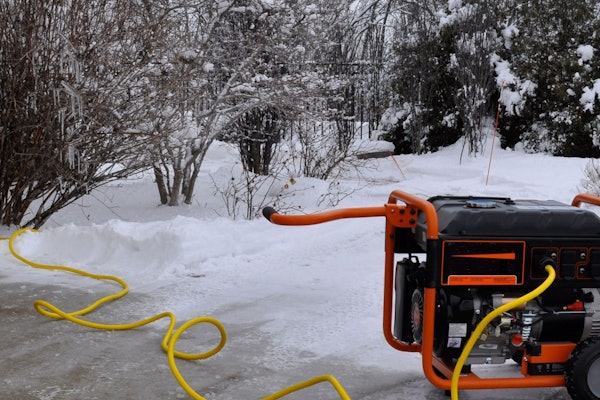Editor’s note: This is part two of a four-part series. The Compact Equipment Guide is a white paper designed to highlight the benefits of various compact equipment and help landscape contractors select the right pieces of equipment for their operation. It also includes a comprehensive look at popular compact equipment specs. Click here to download the full Compact Equipment Guide.

Want to download the entire Compact Equipment Guide, including comprehensive specs on equipment, from the editors at TLC?
As far as capability and ability to get the job done, there is virtually no difference between radial-lift and vertical-lift skid steers. In terms of application, however, it is necessary to split hairs a bit. In general, both versions of the skid steer are able to perform jobs such as loading, clearing debris and leveling or clearing of work sites.
The applications
At first glance, the specific lift capabilities of each machine aren’t easy to spot.
The vertical-lift machine and the radial-lift machine are similar. Just looking at the machines, you wouldn’t be able to tell the difference. You see the difference in the swing arc geometry of the machine from about 3 feet off the ground to full height.
Once it begins to raise, the radial-lift arm swings out in an arc before reaching its peak height. The vertical-lift machine loader arm raises straight up. The result is that each machine is suited for a particular type of job.
 Vertical-lift
Vertical-liftPhoto: Bobcat
Radial-arm skid steers are good for excavating, grading and digging below grade. Vertical-lift machines are ideal for material handling. An example is taking pallets or bricks off of a truck and placing them around the jobsite. If you are loading a lot of dirt into a dump truck, the vertical-lift skid steer is the machine for the job.
When making the decision to purchase or rent, it is best to plan ahead.
The biggest criterion for any customer is to match the machine to the needs of each individual application. Landscapers have to assess if they are doing most of their work at ground level, pushing material, back filling, leveling dirt, etc.
Breakout force and attachments
The bucket breakout forces for each machine don’t change significantly because it only comes into play when the arm is positioned less than 3 feet from the ground.
The lift arm breakout forces may change when the arm is raised because the actual dynamics of the machine change once the loader arms are raised above 3 feet.
 Radial-lift
Radial-liftPhoto: Bobcat
What about price?
While both machine configurations can be useful in a variety of applications, the difference in price depends on who you ask. The radial-lift machines and the vertical-lift machines for some manufacturers are in different weight classes, so the prices will be different. With other manufacturers, the vertical-lift machine will be slightly more expensive because it has more parts in its loader arm.
In conclusion
The major difference between the radial-lift and vertical-lift skid steer is the geometry of each lift arm.
A radial-lift machine will perform the same job as a vertical-lift machine, it’s just that one happens to be better suited for each job. Some contractors will still use a vertical-lift machine excavating and some will use a radial-lift machine with forks lifting pallets.











